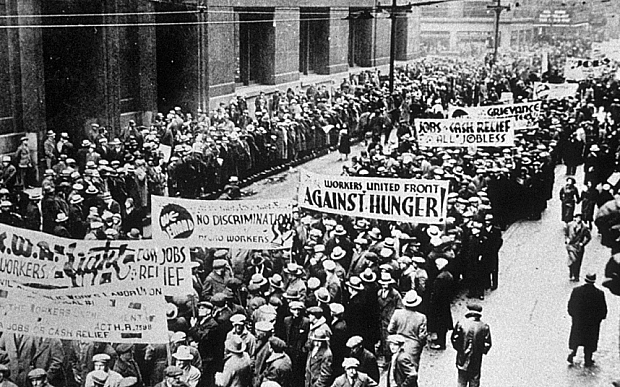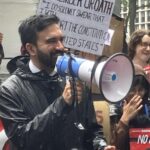Kay Mann
Posted November 21, 2025

Among the targets of the Project 2025/Trump government assault on the most oppressed and vulnerable sectors of the US population, the attack on the poor — that is, workers with incomes under the federal poverty line — stands out in its breadth, depth, and outright cruelty. As part of its standoff with Democrats in Congress over the expiring Obamacare premium credits, the Trump government and its loyal lieutenants in the House of Representatives and Senate cancelled the SNAP food program payments to the millions of officially poor people receiving them, only resuming 65% of these under court order. The Trump government not only brought a suit to halt the payments that judges had ordered resumed, they even sued to recollect the payments that had been released. SNAP payments were supposed to resume after the end of the government shutdown, but they have not yet been fully restored in many states.
Trump’s budget, what he calls the “Big Beautiful Bill,” involves an $800 billion cut to Medicaid — the government-sponsored health care program for those with incomes under the poverty line — while extending tax cuts for the rich and super-rich.
Trump and his neofascist advisors in the Project 2025 program have a long list of rights they seek to abridge and communities they intend to humiliate. But like bullies everywhere, they pick on people in positions weaker than theirs. They have a keen enough sense of the balance of forces to appreciate the risks of moving against rights favored by big majorities of the US population and groups with power and influence. For example, while sharply restricting, if not outright abolishing, reproductive rights is part of their program, Trump has not yet moved on that issue, because a big majority of the US population, including Republicans, supports abortion rights. On the other hand, the poor and immigrant communities, which have taken the brunt of the attacks, lack that power and influence.
Given the already inadequate support, a 35% cut to food assistance payments has certainly increased pain, stress, and hunger for millions. The federal poverty line — approximately $32,000 for a family of four and prorated for different family sizes — is unquestionably far below the level necessary to keep people fed, housed, and clothed. Even at that artificially low level, 10.8% of Americans, nearly 36 million people, — more than the entire population of most countries in the world — are officially poor. A realistic count would put 25-30% of the population in poverty, representing as many as 100 million people. The attacks on assistance to the poor and Medicaid are just the opening salvos of further attacks on the welfare state and social programs that will threaten broader layers of the working class.
Even though SNAP payments have been restored, the one big beautiful bill incorporates rule changes that will certainly further limit poor people’s access to food assistance (just as it does for Medicaid). The other major program addressing poverty, Temporary Assistance for Needy Families (TANF), has already been pared down to almost nothing. In 2023, only 21 families received TANF cash assistance for every 100 families in poverty nationwide, a sharp decline from 68 families out of 100 when the program was first enacted in 1996.
TANF replaced Aid to Families with Dependent Children (AFDC), a program that provided cash payments to poor households throughout the US. The program was founded in 1935 during the depth of the depression and constituted one of the cornerstones of the US welfare state. Before the AFDC program, the poor had only private charities to turn to in times of privation. Programs like AFDC were both a response to the crisis and to pressure from below, as well as a safety valve designed to head off radical resistance. AFDC was discontinued under Clinton in 1996 on the basis of reactionary and disproved arguments about the poor taken directly out of the Republican playbook. Clinton’s plan replaced the federal obligation to provide funding to states for all eligible recipients with block grants that states could administer under their own rules, established much more punitive work requirements for recipients, and placed a five-year lifetime limit for receiving benefits.
Zohran Mamdani’s recent victory in the New York City mayoral elections on a radical program of solutions to affordability points to the depth of support for public programs and the need for solidarity across movements. As Mamdani stated in his victory speech, if Trump goes after one community, he’ll need to take on them all. Indeed, solidarity and broad alliances of oppressed groups are indispensable to beat back Trump’s attacks. Unions need to be at the forefront of the struggle to defend SNAP, and Medicaid, from the attacks to come. Like Mamdani’s program of free transportation, affordable housing, and childcare, SNAP benefits and Medicaid can only be defended by a broad independent mass movement. During the depression of the 1930s, a militant mass unemployed movement led by Communists and Trotskyists led often successful marches to city halls and relief offices demanding food payments when they didn’t exist or had been cut off and increases to existing payments. Such a movement is both needed and possible today to realize Mamdani’s program and defend social programs like Medicaid and SNAP against Trump’s attack on the poorest layers of the US working class.






Leave a Reply